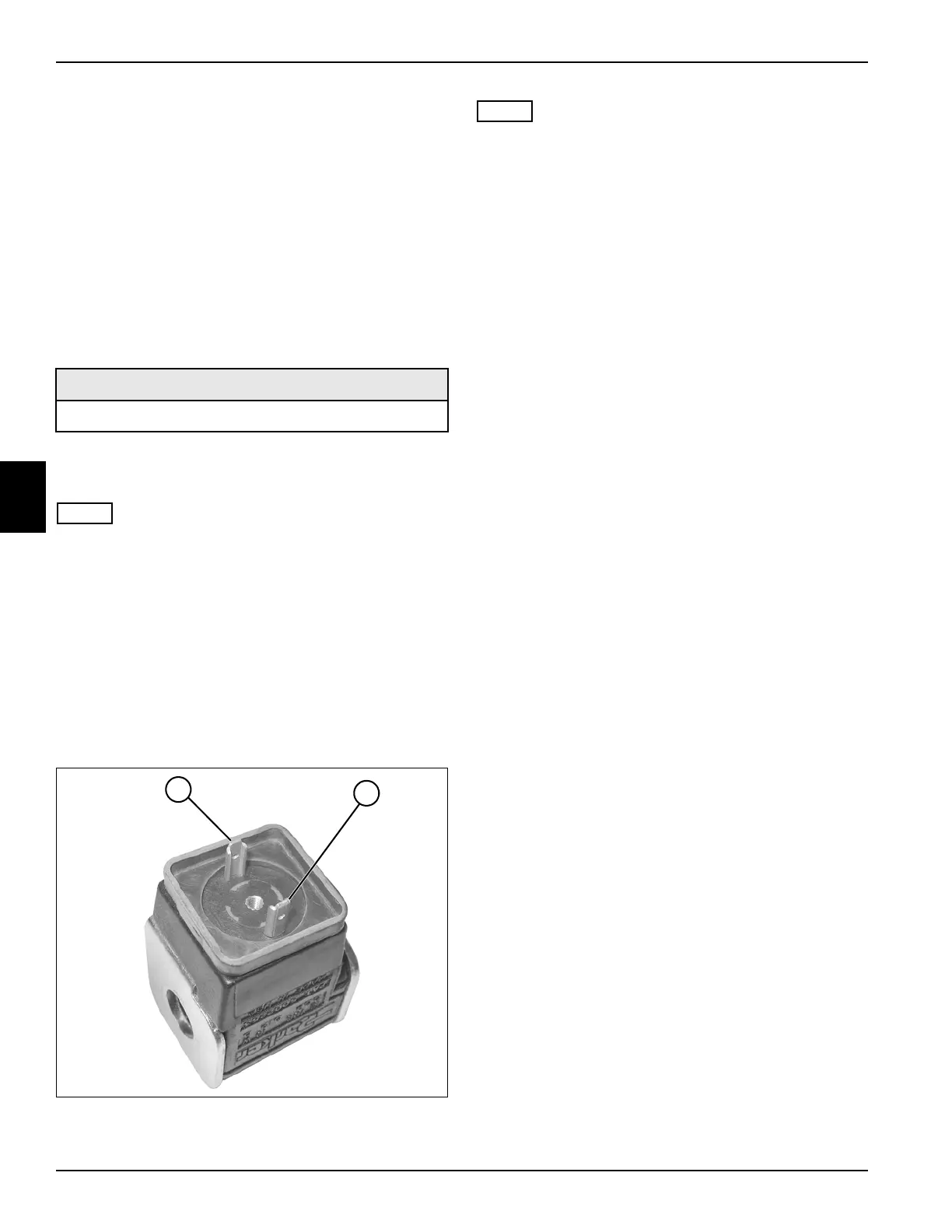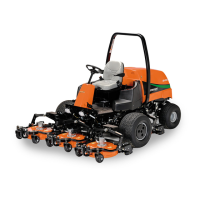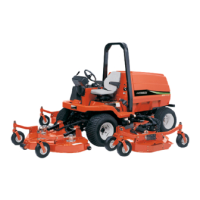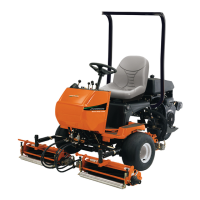4-68 4181384 First Edition
ELECTRICAL
4
5. Reverse the test leads, and record the reading.
Does the meter read approximately 0.557 volts in
one direction, and an open circuit when the leads
are reversed?
YES The diode is good.
NO The diode is faulty; replace the diode
module.
6. Repeat steps 4 and 5 for the remaining diodes,
terminals (3 and 6) and terminals (4 and 5).
Solenoid Test
See Figure 4-42.
1. Park the mower safely. (See “Park Mower Safely” on
page 1-7.)
NOTE
This procedure applies to the following solenoid coils:
• Brake Solenoid Coil
• Mow Solenoid Coil
• Weight Transfer Solenoid Coils
• Lower Solenoid Coil
• Lift Solenoid Coil
2. Locate the component solenoid to be tested.
Remove the solenoid coil from the machine. (See
“Solenoid Coils” on page 4-85.) Identify the coil
markings as either 12 or 24-volt.
Figure 4-42
NOTE
On some meters it will be necessary to select a range for
the component being tested.
3. Using a multimeter or ohmmeter, measure ohms
resistance between terminals (1 and 2). Refer to the
specifications listed for the specific solenoid voltage.
12-Volt Solenoid Coil Equipped Machines
• Brake Solenoid Coil—10.43 ohms ±10% at 68°F
• Mow Solenoid Coil—10.43 ohms ±10% at 68°F
• Weight Transfer Solenoid Coils—10.43 ohms ±10%
at 68°F
• Lower Solenoid Coil—10.43 ohms ±10% at 68°F
• Lift Solenoid Coil—10.43 ohms ±10% at 68°F
24-Volt Solenoid Coil Equipped Machines
• Brake Solenoid Coil—41.74 ohms ±10% at 68°F
• Mow Solenoid Coil—41.74 ohms ±10% at 68°F
• Weight Transfer Solenoid Coils—41.74 ohms ±10%
at 68°F
• Lower Solenoid Coil—41.74 ohms ±10% at 68°F
• Lift Solenoid Coil—41.74 ohms ±0% at 68°F
Does the resistance through the component
match the specified value listed?
YES The solenoid is good.
NO The solenoid is faulty; replace the solenoid.
Required Tools
Digital Multimeter or Ohmmeter
TN1207
1
2

